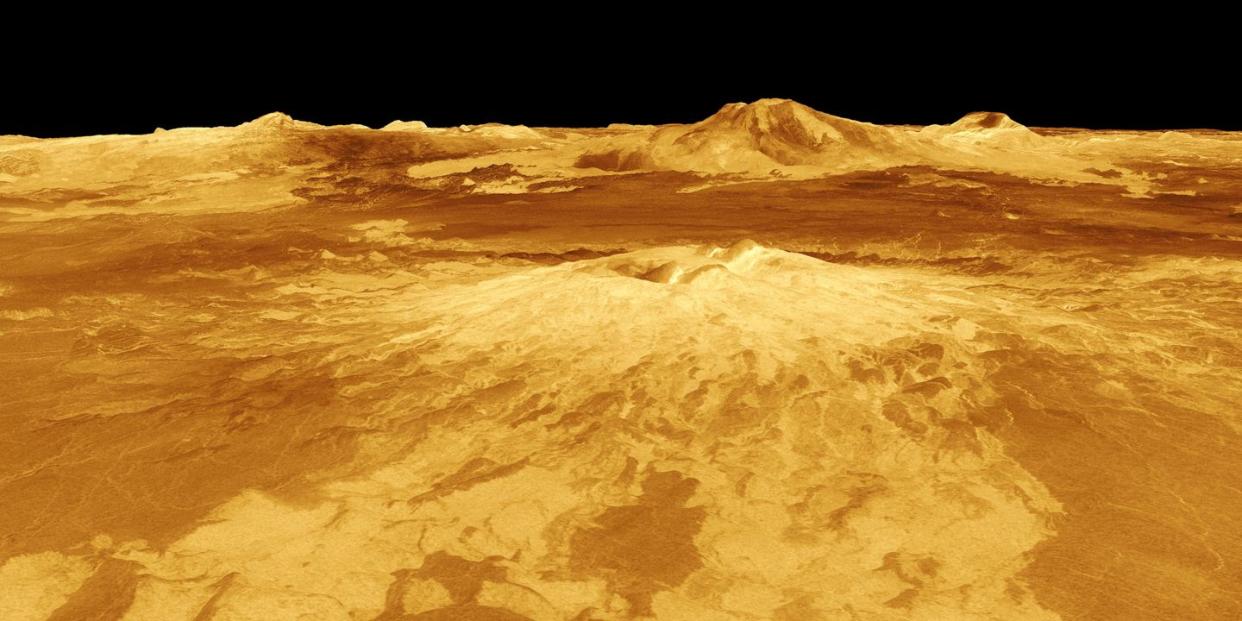Looks Like Venus Was Volcanically Active All Along

New analysis of the chemical signatures of volcanic minerals found on Venus surface reveal that the planet may be volcanically active today.
Previously, Earth was thought to be the only currently volcanically active planet in the solar system.
The surface of Venus, the second planet from the sun, can reach up to 900 degrees Fahrenheit.
As NASA’s Magellan zipped around Venus in the 1990’s, it snapped pictures of sprawling lava flows and volcanic mountains. But scientists have never understood how recently the volcanoes that created these features were active.
A team of researchers, led by planetary geologist and geochemist Justin Filiberto of the Lunar and Planetary Institute, analyzed data collected by the European Space Agency’s Venus Express Orbiter and conducted mineralogical experiments here on Earth to unravel the mystery.
Published January 3 in the journal Science Advances, New research reveals that volcanoes on Venus may have erupted only several years ago. And these volcanoes may still be actively spewing lava today, making it the only other volcanically active planet in our solar system.
“If Venus is indeed active today, it would make a great place to visit to better understand the interiors of planets,” Filiberto said in a statement. “For example, we could study how planets cool and why the Earth and Venus have active volcanism, but Mars does not. Future missions should be able to see these flows and changes in the surface and provide concrete evidence of its activity.”
In the early 2000’s, Venus Express took nighttime infrared readings of the planet’s surface and found the chemically altered minerals within lava flows there were quite young—certainly earlier than 2.5 million years. But scientists were never able to identify an exact age.
Filiberto’s team recreated the highly volatile atmospheric conditions found on Venus’s surface in a laboratory to test how quickly the atmosphere degrades minerals, such as olivine, found in lava. Their results found that this chemical reaction would happen much quicker than expected—within days—suggesting that the flows analyzed by the orbiter are just years old.
Venus remains a mysterious planet. ISAS’s Akatsuki orbiter is currently circling the planet and the Parker Solar Probe just flew by, but little information has been revealed about its surface features since Magellan mapped them in detail.
The surface is inhospitable due to the planet’s runaway greenhouse gas atmosphere and often reaches temperatures of up to 900 degrees Fahrenheit. Though it’s highly unlikely life would be found on the Venusian surface, scientists have suggested that there may be organisms living among the planet’s more temperate cloud formations. Strange as it may seem, the planet lies within the habitable zone.
Venus has long been considered Earth's twin—it's comparable in size, density, and interior structure. Here's one more similarity to add to the list and yet another reason to revisit the strange planet.
You Might Also Like

